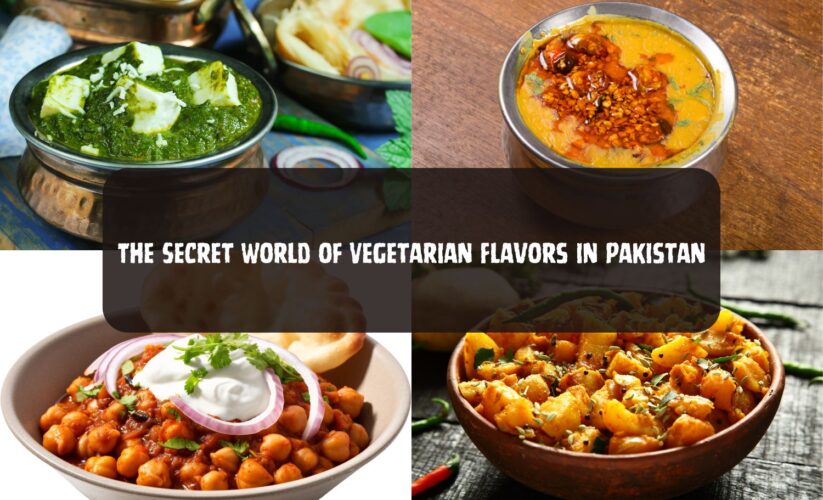
Exploring the Sweet Heritage of Pakistan: A Journey through Mithai
Pakistan, a land of vibrant culture and rich traditions, offers a sensory feast for every traveler. While its savory dishes often take center stage, the country’s sweet heritage, known as “mithai,” is a treasure trove of flavors, textures, and cultural significance. This article embarks on a journey through the sweet heritage of Pakistan at Chef Cooking Resort, exploring its diverse regional specialties, the cultural significance of mithai, and the time-honored traditions behind its creation.
A Sweet Legacy: The Cultural Significance of Mithai
Mithai isn’t merely a dessert in Pakistan; it’s an integral part of social gatherings, celebrations, and religious festivals. It represents hospitality, joy, and the art of culinary craftsmanship. From the humble village sweet shop to the grandest of celebrations, mithai plays a crucial role in Pakistani life.
- Festivals and Celebrations: Mithai is an essential part of Eid, Diwali, weddings, and other festive occasions. It’s offered as a symbol of celebration and shared among family and friends.
- Religious Offerings: In religious ceremonies, mithai is often offered as “prasad,” a sacred offering, symbolizing devotion and gratitude.
- Hospitality: Offering mithai to guests is a gesture of warmth and welcome, reflecting the importance of hospitality in Pakistani culture.
- Everyday Indulgence: Beyond special occasions, mithai is enjoyed as a daily treat, bringing a moment of sweetness to everyday life.
A Regional Tapestry of Sweet Delights:
Pakistan’s diverse regions offer a fascinating array of mithai, each reflecting the local climate, agricultural practices, and cultural influences.
Punjab: The Land of Milk and Honey:
Punjab, known for its fertile plains and dairy production, offers a rich selection of milk-based sweets.
- Gulab Jamun: Soft, golden-brown milk balls soaked in a fragrant sugar syrup, Gulab Jamun is a national favorite and a Punjabi specialty.
- Jalebi: Crispy, pretzel-shaped sweets soaked in a sugary syrup, Jalebi is a popular street food and festive treat.
- Barfi: A dense, milk-based sweet, Barfi comes in various flavors, including Khoya Barfi (reduced milk), Pista Barfi (pistachio), and Besan Barfi (gram flour).
- Ladoo: Spherical sweets made from gram flour, sugar, and ghee, Ladoo is a common sight at celebrations.
- Kheer: A creamy rice pudding flavored with cardamom and pistachios, Kheer is a comforting and classic Punjabi dessert.
Sindh: Coastal and Desert Delights:
Sindh, with its coastal areas and desert landscapes, offers a unique blend of sweet flavors.
- Falooda: A layered dessert drink with vermicelli noodles, rose syrup, basil seeds, and ice cream, Falooda is a Sindhi specialty.
- Sooji Halwa: A semolina-based sweet cooked with ghee and sugar, Sooji Halwa is a common dessert in Sindh.
- Thoom: A sweet dish made with rice flour, sugar, and ghee, Thoom is unique to Sindh.
Khyber Pakhtunkhwa (KPK): Mountainous Sweet Treats:
KPK’s cuisine, influenced by its mountainous terrain, offers hearty and flavorful sweets.
- Halwa Puri: Locals enjoy this breakfast combination as a dessert, Halwa (semolina-based sweet) and Puri (deep-fried flatbread).
- Gosh: Similar to Gulab Jamun, Gosh is a milk-based sweet soaked in syrup, often denser and less porous.
Balochistan: Simplicity and Natural Flavors:
Balochistan’s cuisine emphasizes natural ingredients and simple preparations, reflecting the region’s arid climate.
- Dates: Balochistan is famous for its high-quality dates, often enjoyed as a sweet treat.
- Khajoor Halwa: A date-based halwa, showcasing the region’s abundant date harvest.
Multan:
- Sohan Halwa: A unique sweet, known for its flaky texture.
The Art of Mithai Making: Time-Honored Traditions
The art of mithai making is a cherished tradition in Pakistan, often passed down through generations. Skilled artisans, known as “halwais,” create these sweet delights with meticulous care, using time-honored techniques and secret family recipes.
- Ingredients: Key ingredients include milk, ghee, sugar, nuts, and spices. The quality of these ingredients plays a crucial role in the final product.
- Techniques: Slow cooking, careful stirring, and precise temperature control are essential for creating the perfect mithai.
- Presentation: Locals often present Mithai in beautifully decorated boxes or platters, adding to its visual appeal.
Modern Twists and Innovations:
While traditional mithai continues to be popular, Pakistani mithai makers are also experimenting with modern twists and innovations. Fusion flavors, contemporary presentations, and healthier alternatives are gaining popularity, catering to evolving tastes and preferences.
- Fusion Flavors: Chocolate Gulab Jamun, fruit-flavored Barfi, and other fusion creations are becoming increasingly common.
- Contemporary Presentations: Mithai is now often presented in elegant packaging and creative displays.
- Healthier Alternatives: Sugar-free and low-fat mithai options are catering to health-conscious consumers.
A Sweet Culinary Journey:
Exploring the sweet heritage of Pakistan is a journey that will tantalize your taste buds and introduce you to a world of diverse flavors and traditions. From the creamy delights of Punjab to the unique flavors of Sindh and the simple treats of Balochistan, Pakistani mithai offers a rich and satisfying culinary experience.
Also, read Chef Cooking Resort Blogs and explore the rich sweet heritage of Pakistan.





